
Written by Rowan
Edited on
2 April 2024
·
07:28
How do you set up your Apple MacBook?
Congratulations on your new MacBook purchase! Did you unpack the box, charge your device, and are you ready for the setup? Below, you can read which steps you'll encounter and which options there are.
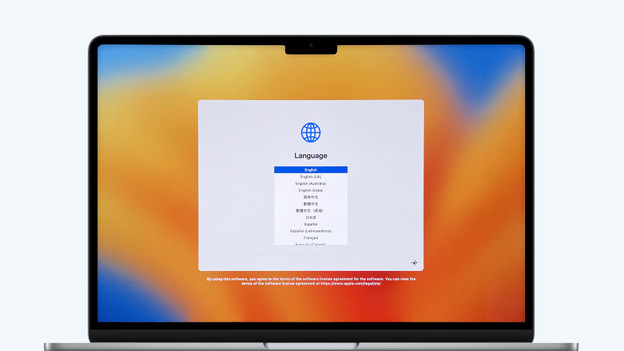
Step 1: choose your language and region
At the first step of the setup, Apple asks you to select a language and region. The language you choose becomes your primary language on your MacBook. You can adjust the language and region at any time after the setup.
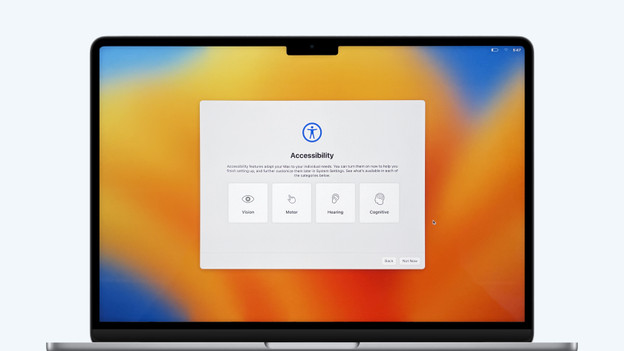
Step 2: use extra functions with 'Accessibility'
Do you have difficulty seeing, hearing, or a motor disability? 'Accessibility' helps you with special functions so you can work with your MacBook more easily.
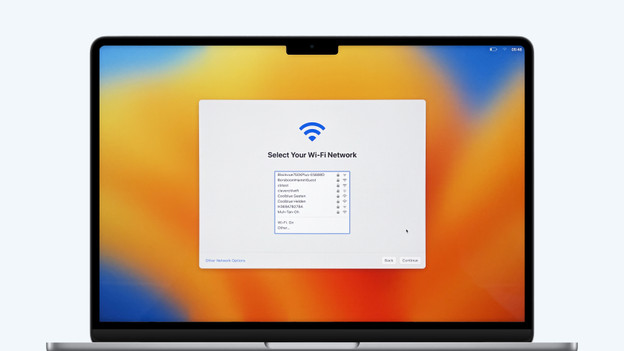
Step 3: choose your WiFi network
Time to connect your MacBook to a WiFi network. Choose your network from the list and enter your password if it's a secured network. If you prefer to connect to a local network, choose 'Other network options'.
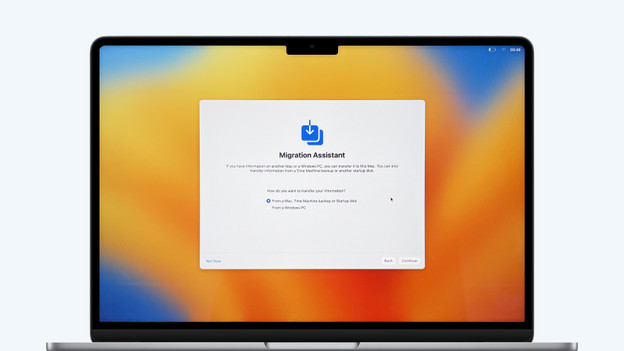
Step 4: copy your data to this MacBook
Do you want to transfer data from another computer to your new MacBook? You can do that here. Do you want to transfer data from another MacBook? Select the option 'From a MacBook, Time Machine backup, or startup disk'.
Is your data coming from a Windows device? Select the option 'From a Windows PC'. If you don't want to transfer data now, select the third option.
You can also transfer data later using the Migration Assistant.
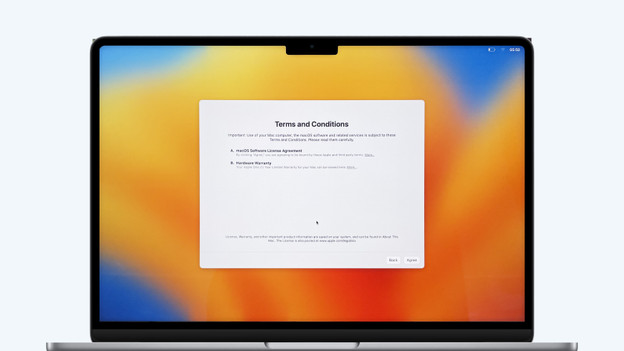
Step 5: accept the terms and conditions
This is the fine print, which you usually wouldn't read. If you have the time, read the conditions above. If you agree, click 'Agree'.
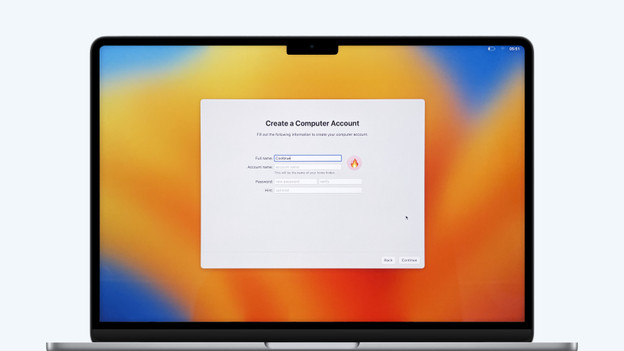
Step 6: create a computer account
Enter your name and account details here. The account name you enter will also be the name of your personal folder. You'll see it more often when using your MacBook. Find a good password as well. One that's not too easy to guess, but one you'll remember easily. If you forget the password later, you can ask for a clue. You can enter the clue in this step.

Step 7: enable location services
Here, you can indicate whether your MacBook can pass your location on to apps and websites. Many apps like as Safari and Maps use location services to give you more specific and personalized information. The disadvantage is that breaches your privacy slightly and can also affect the battery life.
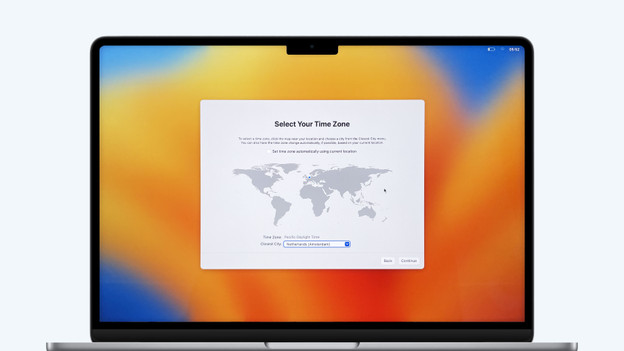
Step 8: select a time zone
At this step of the setup, Apple asks you to select a time zone. This way, your MacBook knows what time to display, for example

Step 9: diagnosis and use
Would you like to help Apple with their app development? Check the two options for forwarding usage information and sharing crash data here.
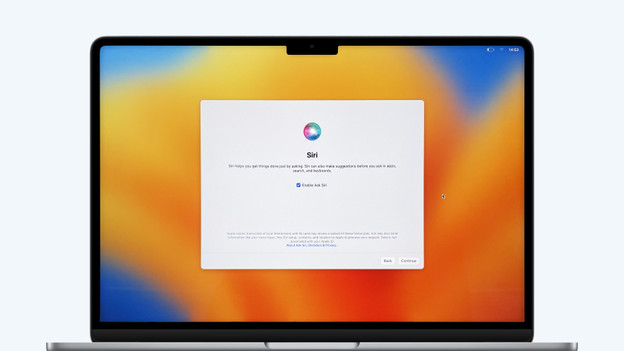
Step 10: enable Siri
Siri is the Apple personal assistant and works based on speech recognition. For example, you can ask your MacBook about tomorrow's weather, start an app, or solve a math problem for you.
If you don't want to enable the option now, you can also switch on Siri later.
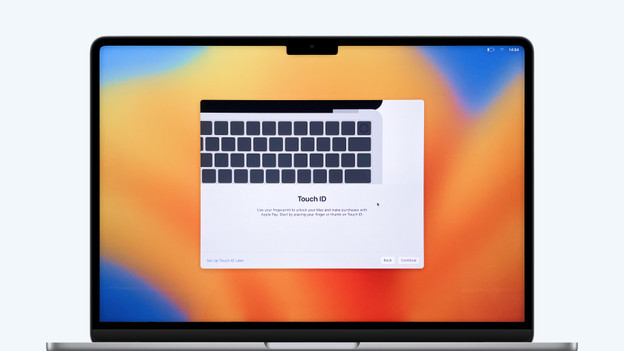
Step 12: use Touch ID
Does your MacBook have Touch ID? You can configure the fingerprint scanner in this step. Briefly place your finger on the scanner several times. You'll find it on the top right of the keyboard. It then scans the sides of your fingerprint so you can easily log in with Touch ID.
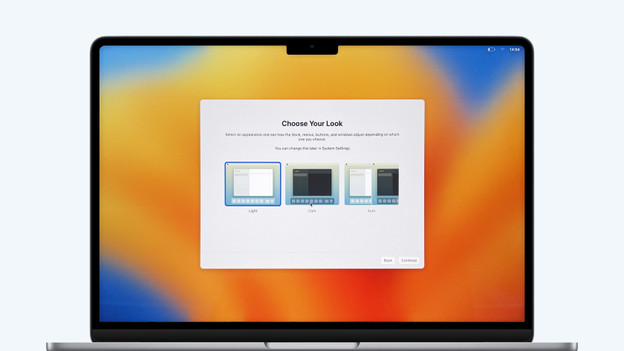
Step 13: choose your display
Want light tabs and details? Choose the white display. Prefer to work with dark tabs and accents? Choose the black display. You can also choose to automatically adjust the screen to your environment. It'll turn white in a light room and black in a dark room this way. You can change the display at any given time.
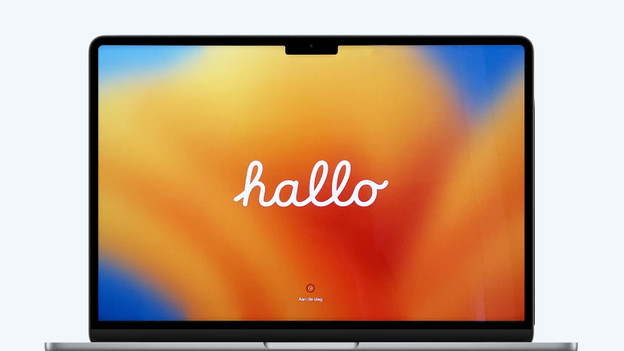
Let's get started!
And that's it. Your personal preferences are saved and your MacBook is ready to use. Have fun!
Extras

Antivirus
To prevent viruses, spyware, adware, and other malicious software on your MacBook, use an antivirus. When you purchase your new Apple MacBook, we'll give you Norton Antivirus for free for 1 year.
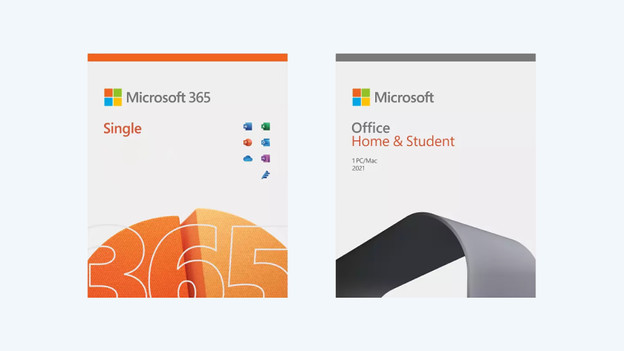
Office suite
Do you want to work with programs like Word, Excel, Powerpoint, and OneNote on your MacBook? You'll need Office suite. You can buy Office suite permanently or get a subscription for 1 year. You can get Office suite for 1 or multiple devices.
